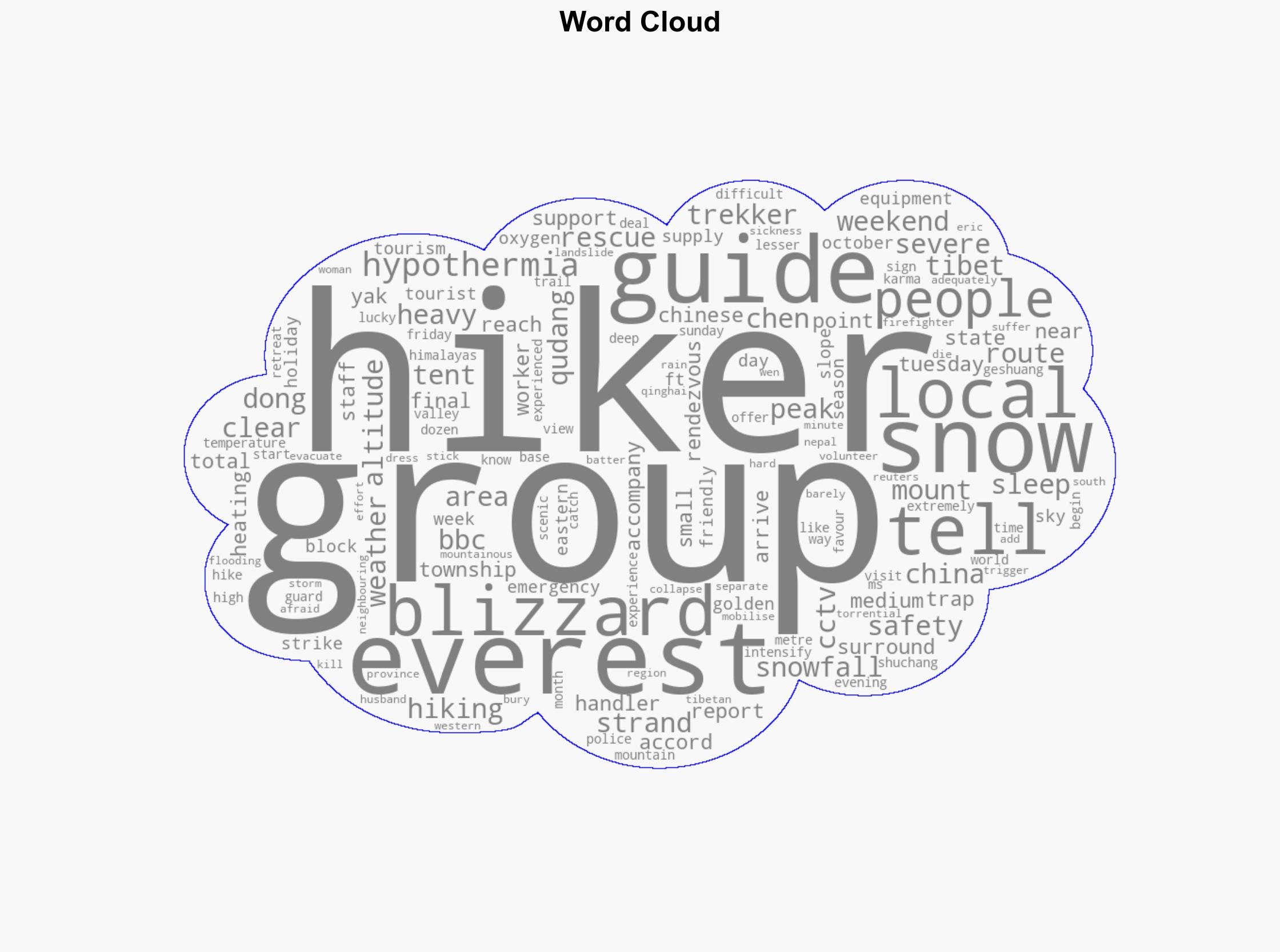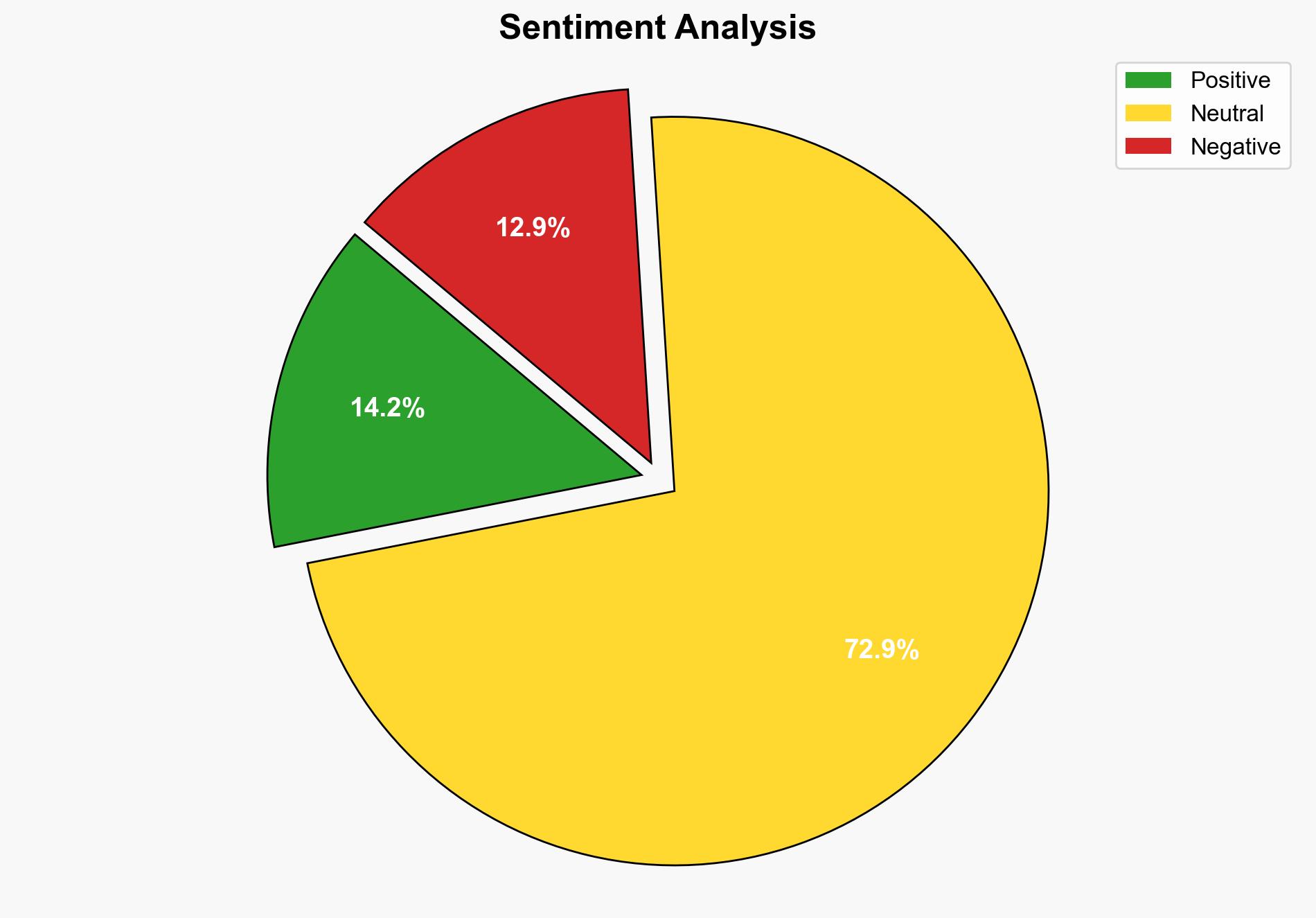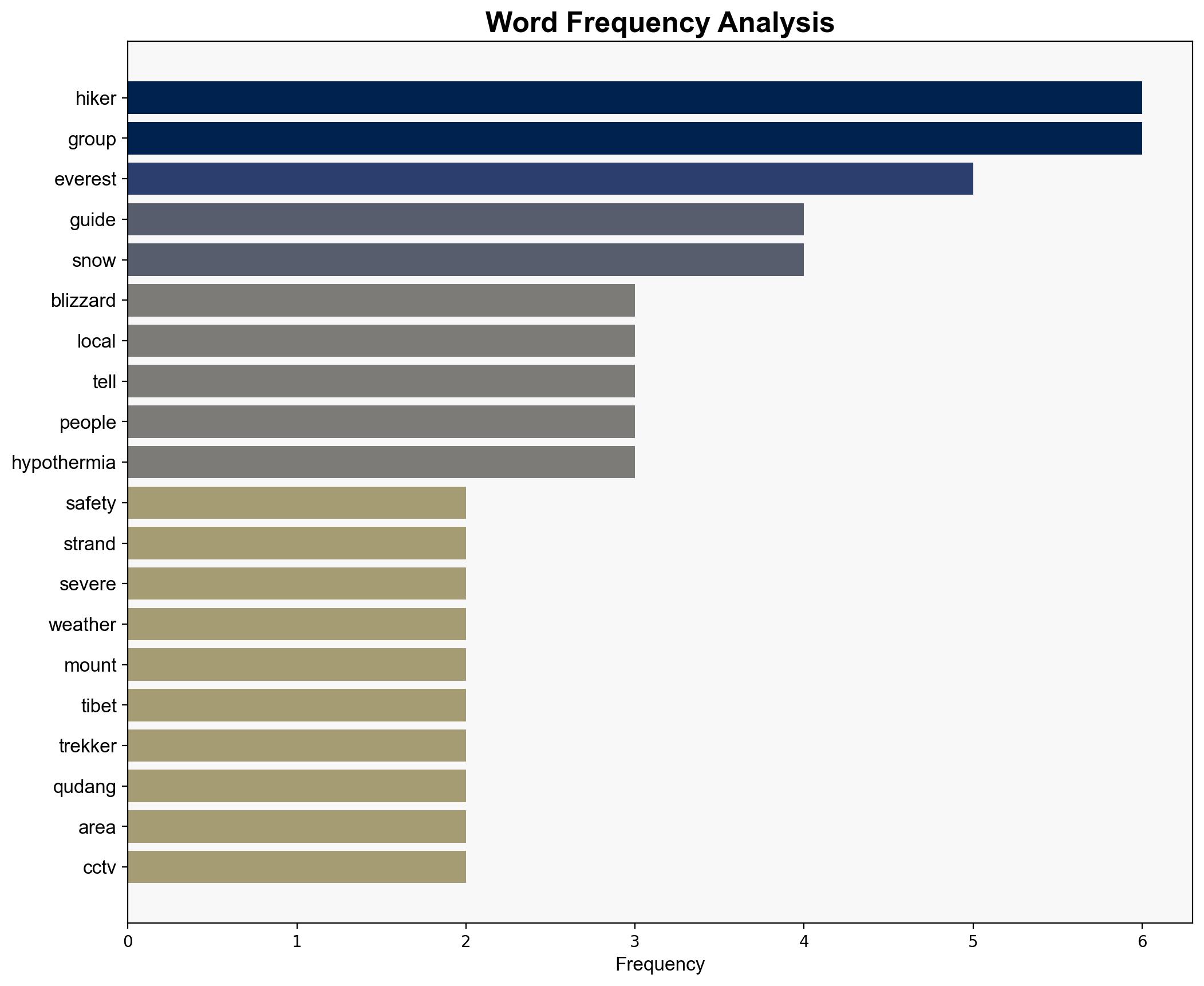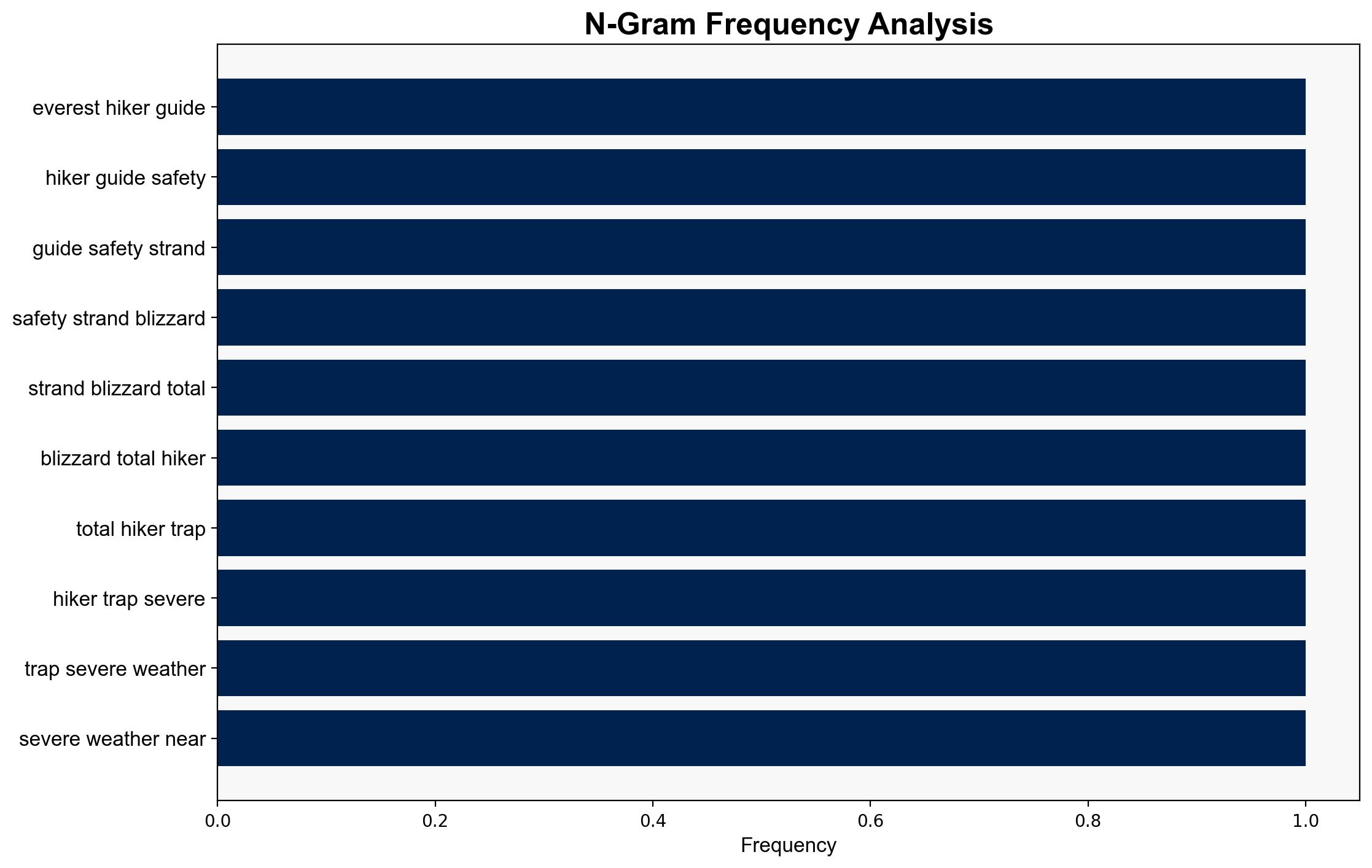Everest hikers guided to safety after being stranded by blizzard – BBC News
Published on: 2025-10-07
Intelligence Report: Everest hikers guided to safety after being stranded by blizzard – BBC News
1. BLUF (Bottom Line Up Front)
The most supported hypothesis is that the blizzard was an unforeseen natural event exacerbated by the peak tourist season, leading to a large-scale rescue operation. Confidence in this hypothesis is moderate due to the reliance on state media reports. It is recommended to enhance early warning systems and emergency preparedness for high-altitude tourism areas.
2. Competing Hypotheses
1. **Hypothesis A**: The blizzard was an unexpected natural occurrence during a peak tourist period, overwhelming local resources and necessitating a large-scale rescue operation.
2. **Hypothesis B**: The incident was exacerbated by inadequate preparation and response mechanisms, highlighting systemic issues in managing high-altitude tourism during adverse weather conditions.
Using ACH 2.0, Hypothesis A is better supported by the available data, including reports of severe weather and the mobilization of local resources. Hypothesis B is less supported but plausible, given the challenges in emergency response noted in the report.
3. Key Assumptions and Red Flags
– **Assumptions**: It is assumed that the blizzard was a natural event and not influenced by human activity. The effectiveness of the rescue operation is assumed to be as reported by state media.
– **Red Flags**: Reliance on state media (CCTV) may introduce bias. The lack of independent verification of the conditions and rescue efforts is a potential blind spot.
– **Inconsistent Data**: Discrepancies in the severity of the situation and the number of affected individuals could indicate underreporting.
4. Implications and Strategic Risks
The incident highlights vulnerabilities in high-altitude tourism, particularly during peak seasons. There is a risk of reputational damage to the region’s tourism industry if similar events occur. Additionally, the incident underscores the need for robust emergency response frameworks to manage natural disasters in remote areas.
5. Recommendations and Outlook
- Enhance weather monitoring and early warning systems for high-altitude regions.
- Develop comprehensive emergency preparedness and response plans tailored to high-altitude tourism.
- Scenario Projections:
- **Best Case**: Improved systems prevent future incidents, boosting tourist confidence.
- **Worst Case**: Repeated incidents lead to a decline in tourism and economic impact.
- **Most Likely**: Incremental improvements in response mechanisms with occasional disruptions.
6. Key Individuals and Entities
– **Dong Shuchang**: Provided firsthand account of the blizzard’s severity.
– **Chen Geshang**: Reported on the group’s experience and challenges faced.
– **Eric Wen**: Described the conditions and impact on the group.
7. Thematic Tags
natural disaster response, tourism safety, emergency preparedness, high-altitude risks





